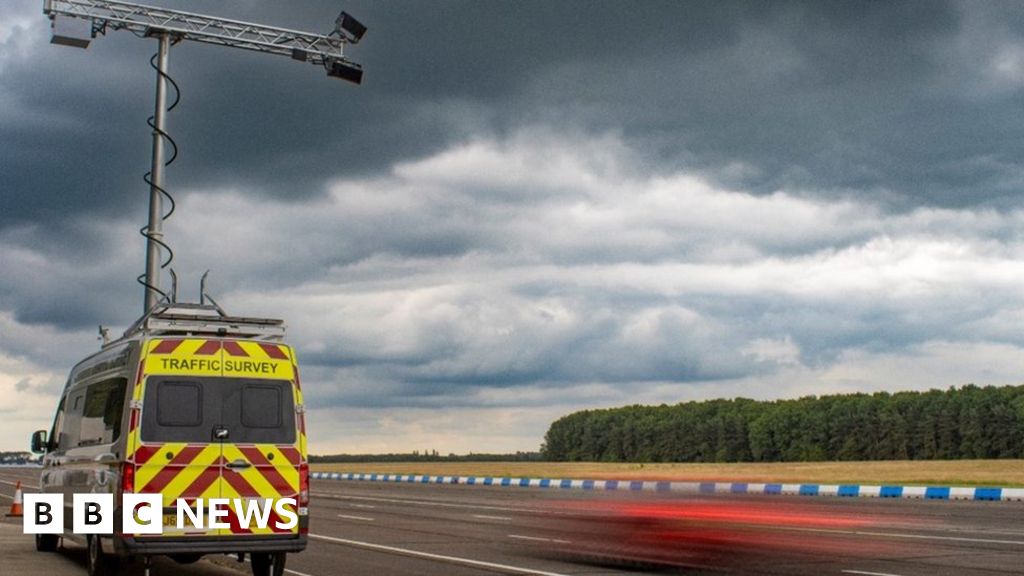Main topic: Wayve, an autonomous driving software company, is challenging the traditional approach to self-driving cars by focusing solely on artificial intelligence (AI) technology.
Key points:
1. Wayve's approach, called AV2.0, aims to build an advanced AI system that does not rely on devices like cameras, radar, and lidar sensors for autonomous driving.
2. If successful, Wayve's technology could make self-driving cars more affordable by reducing the need for expensive equipment.
3. Wayve faces challenges from well-funded competitors and the task of improving its AI software to eliminate the need for safety drivers.
Note: Information sourced from the CNBC article.
Main topic: An AI camera system installed along a major road in England catches 300 offenses in its first 3 days.
Key points:
1. The AI camera system detected 180 seat belt offenses and 117 mobile phone offenses.
2. The system, developed by Acusensus, has been trialed in both England and Australia over the past year.
3. Offenders receive warnings or intended prosecution depending on the severity of the offense.
Main topic: Wayve, a London-based autonomous driving software company, is pursuing an alternative approach to self-driving cars by focusing on artificial intelligence (AI) and deep learning.
Key points:
1. Wayve's goal is to build an AI system advanced enough to not rely on additional technologies such as cameras, radar, and lidar sensors.
2. The company aims to create self-driving cars that can make human-like decisions in real time without a pre-planned route, potentially reducing costs and making autonomous vehicles more affordable.
3. Wayve faces challenges from well-funded competitors and the need to improve its AI software to eliminate the need for safety drivers.
Note: For a more detailed understanding of the topic, additional reading is recommended.
Researchers in California are using artificial intelligence to analyze bodycam footage from the Los Angeles Police Department (LAPD) in order to determine if officers escalated interactions through their language or tone, with the goal of improving officer training and promoting accountability. The study will review about 1,000 traffic stops over the next three years and train an AI system to identify inappropriate interactions based on department policies and public feedback.
AC Transit plans to use artificial intelligence cameras mounted on buses to catch drivers who illegally park in bus-only lanes, with the primary goal of ensuring the safety of riders, particularly elderly and ADA riders, during boarding and exiting processes. The cameras, developed by Hayden AI, automatically detect violations and generate evidence packages sent to the police, potentially improving the timeliness of bus operations. The implementation of these AI cameras is made possible by new state laws that allow transit agencies to use cameras and AI technology for traffic law enforcement.
The authors propose a framework for assessing the potential harm caused by AI systems in order to address concerns about "Killer AI" and ensure responsible integration into society.
Osceola County in Florida will use artificial intelligence (AI) bots to monitor traffic at nine intersections and collect data to improve safety and alleviate congestion, making it the first county in Central Florida to utilize this technology. The AI bots will detect safety issues such as wrong-way vehicles, near misses, and crashes, while a cloud-based traffic monitoring system will evaluate wait times at 41 intersections using data from connected cars. The county's efforts come in response to a fatal crash that raised concerns about road safety in the area.
AI-powered cameras are being used to combat poaching in Madhya Pradesh, Indian American philanthropists have been recognized for their AI work, AI outperforms humans in designing efficient city layouts, an Indian entrepreneur's AI startup is transforming service booking, and celebrities are turning to AI to protect their digital likeness from deepfakes.
New cameras in Washington state are using artificial intelligence to detect wildfires, allowing crews to respond faster and prioritize resources more effectively.
A maker has developed a traffic monitoring system using a Raspberry Pi CM4 and BrainChip's Akida Dev Kit, which captures images from a video traffic feed for evaluation by an AI system, offering potential for businesses and government agencies to monitor traffic patterns.
New Jersey officials will use artificial intelligence to analyze Paterson police body camera footage as part of a reform effort following a state takeover of the police department, which includes requirements for officers to have supervisors present during crisis situations and arrests.
Queen Creek Police Department in Arizona will be the first in the state to use artificial intelligence (AI) software to review police body cam footage, aiming to reduce use of force and promote de-escalation by analyzing officer interactions and creating report cards for each officer. AI technology, such as Truleo, has shown promise in lowering use-of-force incidents in other departments, although further independent studies are needed to assess the potential costs and outcomes.
North Carolina Highway Patrol is using artificial intelligence devices to crack down on distracted truck drivers, as distracted driving killed over 3,500 people in 2021.
Artificial intelligence-enabled cameras, such as the TrailGuard system, are being used to help conservationists protect tigers and other wildlife by distinguishing between species and transmitting images to park rangers or villagers within seconds, leading to a decrease in false alarms and increased efficiency in wildlife surveillance.
The city of Paterson, New Jersey plans to become the first in the state to use artificial intelligence to monitor video footage from police body cameras, despite skepticism from some experts about its effectiveness and impact on officer accountability.
